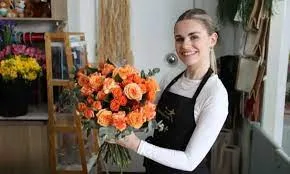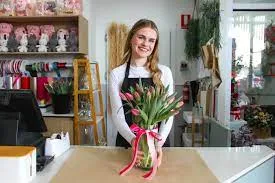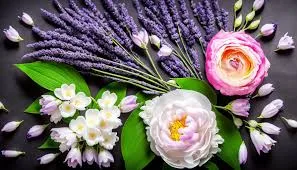News
Choosing the Perfect Floral Gift: Tips for Every Occasion
Part 1: Understanding the Basics of Floral Gifting
Flowers have long been a universal language of emotion. Across cultures and centuries, they have been used to express love, gratitude, sympathy, congratulations, and celebration. The beauty of flowers lies not only in their visual appeal but also in their ability to convey feelings that words often cannot. Choosing the perfect floral gift is both an art and a thoughtful act of communication, requiring an understanding of the recipient, the occasion, and the emotional message you wish to send.
The Timeless Appeal of Flowers as Gifts
Why do flowers remain a timeless gift? Their appeal is multi-dimensional. First, flowers offer immediate aesthetic pleasure—their colors, shapes, and textures are visually captivating. Second, they engage multiple senses: some flowers have exquisite fragrances that evoke memories and moods, while the tactile experience of petals and leaves enhances connection. Third, flowers carry symbolism, allowing them to communicate sentiments ranging from love and admiration to sympathy and hope.
Flowers are universally accessible, making them suitable for virtually any occasion. Unlike many gifts, they do not require extensive knowledge of the recipient’s hobbies or preferences. A carefully selected bouquet can suit a first-time acquaintance, a lifelong partner, a colleague, or a family member, bridging social and emotional gaps with grace.
Factors to Consider When Selecting a Floral Gift
To give a meaningful floral gift, several factors must be considered:
The Recipient
Understanding the recipient’s personality, preferences, and lifestyle is essential. Do they favor bold, vibrant colors or soft, delicate pastels? Are they more traditional, appreciating classic roses and lilies, or adventurous, enjoying exotic blooms like orchids or proteas? Knowing their tastes ensures the bouquet resonates with them personally.The Occasion
Different occasions call for different types of arrangements. A birthday bouquet can be playful and colorful, whereas a sympathy bouquet should be understated, conveying respect and support. Celebrations like weddings, anniversaries, or graduations allow for more elaborate arrangements that reflect joy and significance.Seasonality
Flowers available during a particular season are often fresher, more sustainable, and more cost-effective. Seasonal blooms also align aesthetically with the environment, enhancing the authenticity and beauty of the arrangement. For example, tulips and daffodils shine in spring, sunflowers and lilies thrive in summer, chrysanthemums and marigolds enrich autumn bouquets, and poinsettias and amaryllis define winter arrangements.Meaning and Symbolism
Flowers carry symbolic meanings that have evolved over centuries. Roses, for example, universally convey love and passion, but their colors add nuance: red for romance, yellow for friendship, white for purity, and pink for admiration. Lilies often symbolize devotion and remembrance, tulips express elegance and grace, and orchids signify luxury and strength. Considering these meanings ensures that your floral gift communicates the intended emotion effectively.
Popular Flowers and Their Symbolism
Here is a guide to some commonly gifted flowers and what they signify:
Roses: Love, admiration, respect, passion (colors convey specific emotions).
Tulips: Elegance, grace, renewal, and cheerful sentiments.
Lilies: Purity, devotion, sympathy, and sophistication.
Orchids: Luxury, strength, beauty, and exotic appeal.
Carnations: Affection, fascination, and distinction; often used in celebrations.
Gerbera Daisies: Cheerfulness, innocence, and vibrant energy.
Sunflowers: Joy, adoration, and loyalty.
Chrysanthemums: Loyalty, longevity, and comfort in times of sorrow.
Understanding these symbolic meanings helps personalize bouquets and ensures your gift aligns with the intended emotional message. Combining symbolic blooms can further enhance the message, allowing you to tell a nuanced story through flowers.
Choosing Colors to Match Personality and Emotion
Color plays a pivotal role in the emotional impact of floral gifts. Thoughtful color selection can enhance the bouquet’s message:
Red: Passion, love, energy, and courage.
Pink: Affection, admiration, grace, and gentleness.
Yellow: Friendship, happiness, and optimism.
White: Purity, peace, respect, and remembrance.
Orange: Enthusiasm, warmth, and creativity.
Purple: Luxury, dignity, and admiration.
Color combinations should harmonize rather than clash. Complementary colors create vibrancy, analogous colors provide harmony, and monochromatic schemes offer elegance. For example, a birthday bouquet for a cheerful friend may include yellows and oranges for vibrancy, while a wedding arrangement may favor soft pinks and whites for romance and elegance.
Arrangements Styles and Their Emotional Impact
Beyond the selection of flowers and colors, the arrangement style communicates mood and intention:
Hand-Tied Bouquets: Casual elegance, suitable for personal gifting and intimate occasions. The spiral technique creates a natural, flowing appearance.
Vase Arrangements: Structured, formal, and long-lasting. Ideal for corporate gifts, holidays, and home decor.
Cascading Bouquets: Dramatic and luxurious, often used for weddings or romantic gestures.
Modern or Minimalist Arrangements: Simplicity and sophistication, emphasizing individual blooms and negative space.
Each style evokes different emotions. A hand-tied bouquet conveys warmth and thoughtfulness, while a modern arrangement projects elegance and refined taste. Aligning style with the occasion ensures that the bouquet communicates effectively.
Longevity Considerations
A meaningful floral gift should remain fresh as long as possible. To maximize longevity:
Trim stems at a 45-degree angle before arranging.
Remove foliage that would sit below the waterline to prevent bacterial growth.
Use floral preservatives or natural alternatives to nourish blooms.
Consider bloom hardiness: some flowers, like chrysanthemums and carnations, last longer than tulips or peonies.
Avoid exposing delicate blooms to direct sunlight, heat, or drafts.
Longevity reflects care. A bouquet that maintains its freshness demonstrates thoughtfulness and attention to detail.
Conclusion of Part 1
Understanding the basics of floral gifting lays the foundation for creating bouquets that are visually appealing, emotionally resonant, and personally meaningful. By considering the recipient, occasion, seasonal availability, symbolism, color, arrangement style, and longevity, you can craft gifts that communicate your intentions beautifully and effectively.
Part 2 will expand on this foundation by exploring how to select and design bouquets for specific occasions, ensuring each floral gift is perfectly suited to celebrate life’s milestones, romantic gestures, achievements, or moments of sympathy.

Part 2: Selecting and Designing Bouquets for Specific Occasions
Flowers are a universal language, but to truly make an impact, they must align with the occasion. Selecting and designing the right bouquet requires understanding the purpose of the gift, the emotional tone, and the personality of the recipient. From celebratory milestones to moments of sympathy, carefully curated floral arrangements can communicate exactly what words sometimes cannot.
1. Birthdays, Anniversaries, and Milestones
Special occasions such as birthdays, anniversaries, and personal milestones demand vibrant, thoughtful arrangements that convey joy and celebration.
Birthdays: A birthday bouquet should be cheerful and uplifting. Bright colors such as yellows, oranges, and pinks evoke happiness and excitement. Gerbera daisies, sunflowers, tulips, and roses are excellent choices. Mixing different textures and bloom sizes adds visual interest. Adding playful accents like small seasonal fruits, ribbons, or sparkly details can create a celebratory mood. For milestone birthdays—such as 30th, 50th, or 75th—consider luxurious blooms like peonies, lilies, or orchids arranged in a sophisticated manner. Personal touches, such as including the recipient’s favorite colors or a handwritten note, enhance the emotional connection.
Anniversaries: Romantic milestones call for elegance and intimacy. Red and pink roses symbolize love and passion, while tulips and lilies convey devotion and grace. Hand-tied bouquets with soft cascading stems create a sense of movement and natural beauty. For a modern touch, minimalist arrangements with monochromatic color schemes can evoke understated sophistication. Pairing flowers with subtle accents like eucalyptus, baby’s breath, or seasonal greenery can elevate the arrangement without overshadowing the main blooms.
Milestones: Graduation, promotion, or retirement bouquets often blend celebratory colors with formal elegance. Bright, energetic blooms like sunflowers or dahlias symbolize achievement and joy, while more refined options like orchids or lilies convey respect and admiration. Choosing a vase that complements the occasion—such as a sleek modern container for a corporate achievement or a classic glass vase for a family celebration—enhances the presentation.
2. Romantic Gestures
Romance is perhaps the most nuanced occasion for floral gifting. Flowers have long been intertwined with expressions of love, desire, and intimacy, making the right bouquet essential for Valentine’s Day, proposals, or anniversaries.
Valentine’s Day: Red roses are the quintessential symbol of love and passion. Pairing them with softer pinks or white lilies creates depth and sophistication. Heart-shaped arrangements or custom ribbon choices add a romantic flair. Layering textures, such as pairing smooth petals with feathery greenery, enhances visual interest while maintaining elegance.
Proposals: When proposing, the bouquet should reflect both passion and thoughtfulness. A mix of large focal blooms like roses or peonies with smaller supporting flowers communicates care and attention to detail. Including elements like delicate filler flowers or aromatic herbs such as lavender adds a multi-sensory experience. For extra personalization, integrate elements reflecting shared memories or favorite colors.
Anniversaries: Beyond the first year, anniversary bouquets often benefit from variety and symbolism. Combining flowers that represent enduring love, such as orchids for strength and roses for passion, creates a layered message. Seasonal flowers can also reflect the passage of time, with spring blooms symbolizing renewal and autumn hues representing maturity and depth of relationship.
3. Celebrations and Achievements
Flowers are ideal for commemorating accomplishments, whether personal or professional. Graduations, promotions, and retirements call for arrangements that convey pride, admiration, and encouragement.
Graduations: Bright and cheerful bouquets like sunflowers, gerbera daisies, and tulips reflect excitement and accomplishment. Adding thematic accents, such as small graduation cap charms or ribbons in the school’s colors, personalizes the arrangement. Choosing blooms that can endure several days ensures the bouquet remains vibrant throughout celebrations.
Promotions: Professional achievements are best honored with arrangements that combine elegance with subtlety. Lilies, orchids, or carnations in muted tones communicate respect and admiration. Sleek containers, such as modern glass vases or metallic planters, create a sophisticated presentation.
Retirements: For retirement, arrangements often blend vibrant celebratory colors with calming tones. Sunflowers, chrysanthemums, and roses can be combined to reflect joy, gratitude, and a sense of new beginnings. Including personalized touches such as notes of appreciation, favorite flowers, or seasonal accents adds sentimental value.
4. Sympathy and Condolences
Not all occasions are celebratory. Flowers also play a critical role in expressing empathy, comfort, and respect during difficult times. Sympathy and condolence arrangements require subtlety, elegance, and thoughtfulness.
Funerals and Memorials: White lilies, chrysanthemums, roses, and carnations convey peace, remembrance, and purity. Arrangements should be understated, avoiding overly bright colors that may feel inappropriate. Consider including greenery like ferns or eucalyptus to add texture without overpowering the solemn tone.
Personal Condolences: For sending flowers to someone grieving privately, a small vase arrangement or hand-tied bouquet can communicate care without overwhelming the recipient. Including a thoughtful note or personalized message reinforces emotional support.
Cultural Considerations: Understanding cultural norms is essential. In some cultures, white chrysanthemums are traditional mourning flowers, while in others, they are used for celebration. Awareness of these nuances ensures your gift is respectful and appropriate.
5. Seasonal Considerations in Design
Seasonal flowers not only reflect natural beauty but also enhance the relevance and freshness of your bouquet. Designing with seasonal blooms ensures availability, sustainability, and vibrancy.
Spring: Tulips, daffodils, hyacinths, and cherry blossoms. Light, pastel hues create freshness and renewal. Arrangements often feel airy and dynamic, reflecting spring’s rejuvenating energy.
Summer: Sunflowers, lilies, zinnias, and roses. Bold colors and robust blooms create energetic and joyful compositions. Summer bouquets can incorporate lush greenery for volume and texture.
Autumn: Chrysanthemums, marigolds, asters, and dahlias. Warm, rich tones evoke harvest and abundance. Layered textures and seasonal accents like berries or small gourds enhance depth and authenticity.
Winter: Poinsettias, amaryllis, winter roses, and evergreens. Festive colors such as red, white, and green dominate. Bouquets can incorporate pinecones, holly, or decorative ribbons for a seasonal touch.
Understanding the visual and symbolic language of seasonal flowers ensures that each bouquet feels contextually appropriate and emotionally resonant.
6. Combining Flowers, Textures, and Colors for Maximum Impact
Designing a bouquet involves more than selecting flowers—it requires blending textures, colors, and shapes to create a harmonious visual statement.
Layering: Place larger focal flowers centrally or slightly offset to draw attention, surrounded by medium and smaller blooms to create depth.
Texture: Combine smooth petals with feathery foliage, spiky accents, or berries to enhance visual interest.
Color Harmony: Use color theory to balance complementary, analogous, or monochromatic palettes. Bright celebratory arrangements benefit from vibrant contrasts, while formal or romantic bouquets often rely on harmony and subtle transitions.
Movement: Spiral or cascading arrangements guide the eye naturally, creating a sense of flow and elegance.
Conclusion of Part 2
Selecting and designing bouquets for specific occasions is an intricate process that blends artistry, emotional intelligence, and practical knowledge. By tailoring arrangements to birthdays, anniversaries, achievements, romantic gestures, or moments of sympathy, florists and enthusiasts can craft gifts that communicate precisely what words sometimes cannot. Seasonal awareness, thoughtful use of colors, textures, and symbolism, and alignment with the recipient’s personality ensure each bouquet is visually stunning, contextually appropriate, and emotionally impactful.
Part 3 will explore personalizing your floral gift for maximum impact, including adding unique touches, presentation strategies, and creative ways to create lasting memories with every bouquet.

Part 3: Personalizing Your Floral Gift for Maximum Impact
While understanding the basics of floral gifting and designing occasion-specific bouquets are essential, the true magic lies in personalization. A personalized bouquet communicates thoughtfulness, attention to detail, and emotional connection. It transforms a beautiful arrangement into a memorable and meaningful experience.
1. Adding Personal Touches
Personalization begins with the details that reflect the recipient’s personality, preferences, or shared memories.
Handwritten Notes: A simple, heartfelt message attached to a bouquet can transform it from a beautiful gift into a lasting memory. Personalized notes allow you to express emotions that the flowers themselves may not fully convey. Whether it’s a birthday wish, a congratulatory note, or words of comfort, the note adds a layer of intimacy and thoughtfulness.
Ribbons and Wrappings: Choosing ribbons or wrapping materials that reflect the recipient’s taste can elevate the bouquet. Silk ribbons offer elegance, burlap provides rustic charm, and metallic finishes communicate luxury. Wrapping paper can complement the occasion, using bright patterns for celebratory events or subtle, muted tones for more solemn occasions.
Custom Containers: Unique vases, jars, or baskets can turn a bouquet into a decorative keepsake. Seasonal containers, such as pumpkin planters for fall or festive tins for winter, enhance thematic resonance. For a more personal touch, consider containers that reflect hobbies or interests, such as a teapot for a tea lover or a rustic pot for someone who loves gardening.
Thematic Accents: Small decorative elements, such as dried herbs, feathers, crystals, or charms, can add personality and uniqueness. Even subtle additions, like a sprig of lavender, berries, or a tiny ornament, can make the bouquet feel special and thoughtfully curated.
2. Matching the Gift to the Recipient’s Tastes and Lifestyle
Understanding the recipient’s lifestyle and personal preferences ensures that the bouquet is both meaningful and practical.
Lifestyle Considerations: Some recipients may prefer minimalistic arrangements that require little maintenance, while others may enjoy elaborate bouquets that allow them to experience the artistry of flower care. Considering space constraints—such as small apartments or office desks—can also influence bouquet size and style.
Color Preferences: Incorporating the recipient’s favorite colors demonstrates attention to detail and enhances personal resonance. Color can also reflect personality traits—vibrant hues for energetic individuals, soft pastels for those with a gentle disposition, or monochromatic schemes for fans of elegance and simplicity.
Flower Preferences: If known, including the recipient’s favorite flowers or blooms with personal significance makes the gift more meaningful. Even subtle nods, such as including a flower associated with a memorable shared experience, can deepen emotional impact.
3. Presentation Tips for Maximum Impact
How a bouquet is presented can enhance its visual appeal and emotional effect.
Wrapping and Ribbon Techniques: Thoughtful wrapping techniques, such as layered paper, decorative tissue, or a spiral ribbon, enhance the first impression. Presentation communicates care even before the recipient opens or sees the full arrangement.
Delivery Considerations: Timing and method of delivery matter. Sending flowers directly to the recipient’s home or office with a personal message can create a surprise element, while hand-delivery allows for face-to-face interaction and immediate appreciation. For virtual celebrations, arranging for local florists to deliver the bouquet ensures freshness and timely arrival.
Display Suggestions: Including guidance for displaying the bouquet—such as optimal vase placement, water care tips, and trimming suggestions—shows thoughtfulness. Presentation instructions can ensure that the recipient enjoys the flowers at their best for as long as possible.
4. Creating Lasting Memories with Thoughtful Floral Gifts
A truly personalized bouquet leaves a lasting impression. Thoughtful floral gifts are not just about beauty—they are about connection and shared experience.
Narrative Through Blooms: Each arrangement can tell a story. Combining specific flowers to represent emotions, milestones, or personal memories creates a narrative that resonates deeply with the recipient. For example, pairing roses for love, sunflowers for admiration, and lilies for devotion can communicate a multifaceted message.
Multi-Sensory Experience: Including fragrant flowers enhances the sensory impact. The subtle scent of lavender, roses, or lilies can evoke memories and create emotional resonance, turning the bouquet into a multi-dimensional gift.
Evolving Experience: Some flowers continue to bloom or change color over time. Incorporating such blooms allows the gift to evolve, offering ongoing delight and reinforcing the sense of life and growth.
Emotional Connection: Personal touches—notes, ribbons, favorite flowers—demonstrate thoughtfulness. The recipient recognizes the effort and intention behind the gift, creating a deeper emotional connection and fostering long-lasting memories.

5. The Art of Giving Flowers
Personalizing floral gifts is an art form. The combination of careful selection, thoughtful design, and meaningful presentation ensures that each bouquet transcends beauty to become a meaningful gesture.
Whether it’s a vibrant birthday bouquet, a romantic anniversary arrangement, a congratulatory gift for achievements, or a comforting sympathy bouquet, personalization ensures that the flowers speak directly to the recipient’s heart. A well-crafted floral gift communicates emotion, celebrates relationships, and enriches life’s moments, making the act of giving as meaningful as the gift itself.
Conclusion of Part 3
The art of personalizing floral gifts transforms them into powerful expressions of care, love, and thoughtfulness. By adding unique touches, aligning with the recipient’s personality, considering presentation, and crafting a multi-sensory experience, every bouquet becomes more than a visual delight—it becomes a cherished memory.
Flowers are living, breathing tokens of sentiment. With personalization, they carry messages that linger long after the petals fade. Thoughtful selection, careful design, and meaningful presentation ensure that every floral gift communicates exactly what words alone cannot: the depth of feeling, attention to detail, and the sincerity of the giver.
Personalized floral gifting is not just about flowers—it is about storytelling, connection, and celebration. Each arrangement becomes a testament to life’s beauty and the emotions we wish to share, creating moments that are remembered, treasured, and celebrated for years to come.

